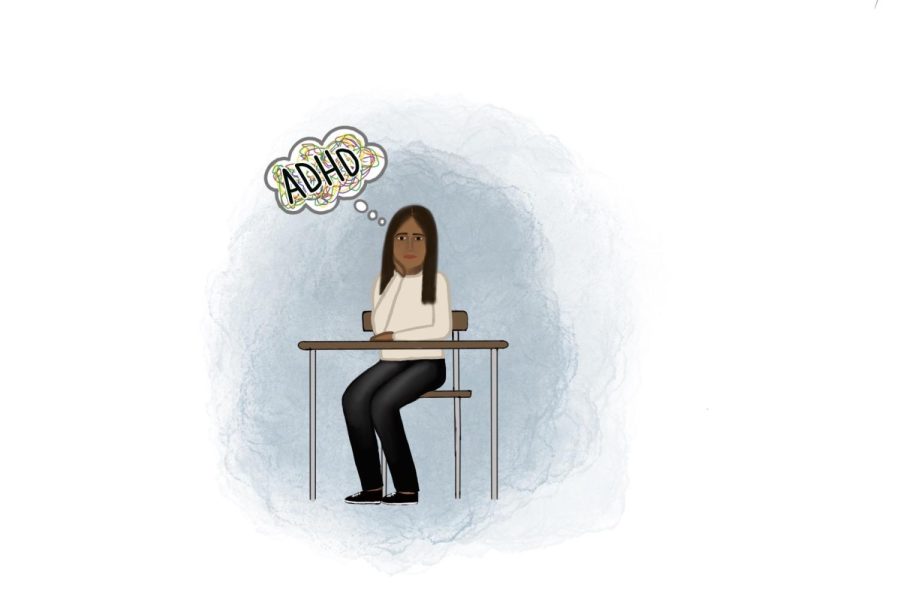Misunderstood and Misdiagnosed: The Long-Term Effects of ADHD in Women
The missed diagnoses of ADHD have a disproportionate effect on young women.
March 8, 2023
Around 5.6% of women and girls are impacted by attention-deficit/hyperactivity disorder (ADHD), however this is only the percentage of those who have been diagnosed. The frequent underdiagnosis of ADHD in girls and women can have long-term effects on those who are unnoticed, as the challenges of this disorder can impact every aspect of their lives from school to work to relationships.
ADHD is defined by the Center for Disease Control and Prevention as one of the most common neurodevelopmental disorders in children. The disorder is identified by behaviors of hyperactivity, impulsiveness, and difficulty paying attention.
Most young girls with ADHD do not present with many of the hyperactive and impulsive behaviors associated with the disorder. This is why boys are successfully diagnosed with the disorder at a much higher rate than girls. While the gender gap has decreased in recent years, disproportionate diagnoses are still prevalent.
Girls with ADHD most often present inattentive symptoms, such as forgetfulness, disorganization, and struggles with paying attention. These symptoms are commonly missed because they tend to be less obvious and disruptive, and it is estimated that anywhere from 50% to 75% of girls with ADHD are missed.
Due to delayed diagnoses, girls with ADHD tend to develop ways to mask their disorder, making it much harder for them to be diagnosed further down the line. Many of these girls feel as though they have poor self-esteem while hiding their difficulties from others.
Mental health issues like anxiety and depression are also much easier to identify than ADHD, so these problems tend to be treated without further investigation into other underlying issues, causing ADHD to be overlooked even when other disorders are identified.
These delayed diagnoses in young girls can have long-term consequences. Girls with ADHD are often twice as likely to have a major depressive disorder, and they are also at a much higher risk of self-harm and suicidal thoughts.
This issue runs deeper in society than most people are aware of.
As a young woman who has been diagnosed with ADHD late in her teenage years, I have experienced many of the setbacks mentioned above. One of the reasons my diagnosis came so late was because I displayed inattentive ADHD symptoms, and many of my symptoms, especially as a child, were written off as simply aspects of my personality, like being too talkative or having a short attention span.
Not displaying the typical symptoms, impulse control issues, or frequent hyperactivity led to my symptoms being overlooked.
As I continued in my schooling, I began to suffer academically because I did not receive the help I needed due to my struggles with ADHD having not been recognized yet. This caused me to be unsuccessful in many academic areas, like missing key lessons and content because I could not focus, and I felt that I had to work twice as hard as my peers just to keep up with them.
This lack of support led to academic burnout and poor grades because I could not stay focused, and I did not have the proper resources to assist me.
This same story rings true for many of my female peers who have also been diagnosed with ADHD or other attention disorders. My goal is to advocate for young girls who are facing the same challenges that I did, and I hope that educating more people about the differences in how ADHD presents itself will help bring more awareness to the issue and make a difference in these young girls’ lives.







Dawn Marie • Mar 9, 2023 at 8:02 am
Thank you for sharing your experience! This is a subject that doesn’t get anywhere near the amount of attention it deserves. Women and girls often find themselves over looked by the medical community and nowhere is this most on display than ADHD!
I reccomend an Instagram site that may be helpful, specifically for girls – ADHD Love